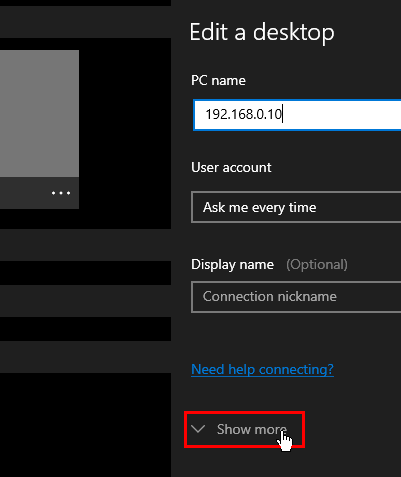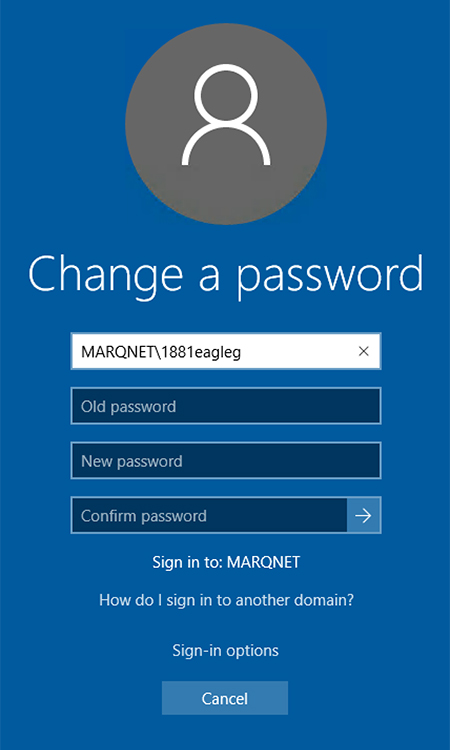Microsoft Remote Desktop Display Settings
- Microsoft Remote Desktop For Mac
- Microsoft Remote Desktop App
- Microsoft Remote Desktop Display Settings Mac
The Remote Desktop Connection program in Microsoft Windows offers many advanced features that can enhance your experience with remotedesktop.sou.edu or virtuallab.sou.edu
Available options include:
You can't see a single remote session on multiple monitors, as apps from the Windows Store (like the Remote Desktop app) can only be opened on one screen at a time. You can use a standard client to use multi-monitor setup. Try running 'mstsc.exe -multimon'. Support for multiple monitors is available when connecting from any Windows 7/8.1/10. Select Start Settings System Display. If you want to change the size of your text and apps, choose an option from the drop-down menu under Scale and layout. Learn how to change just your text size in Make Windows easier to see. To change your screen resolution, use the drop-down menu under Display resolution. Microsoft remote display adapter was eliminated from the remote computer through the device manager and now when you try to connect to the remote desktop, only a black screen appears and the connection is disconnected after a minute. How to restore Microsoft remote display adapter of a remote computer (there is direct access to it now)?
Display
Local Resources
Experience

All of these settings are available after clicking the down arrow next to Options in the Remote Desktop Connection window.
By default, Remote Desktop Connection runs full screen and at a color depth of 32-bit. By clicking the Display tab, you can adjust the resolution and color depth. If you have multiple monitors on the computer you are connecting from, you can check the box to Use all my monitors for the remote session so that you can use all of your displays. To see the remote screen in a window instead of full screen, simply adjust the slider from large to small. It is not usually necessary to adjust color depth, but lower color depths will improve performance (below 16-bit color, you will notice significant dithering and unusual colors).
Microsoft Remote Desktop For Mac
The next tab, Local Resources, allows you to enable local printing or sound. After clicking this tab, you should see the screen below.
Microsoft Remote Desktop App
If you want to print to a printer physically connected to your desktop or laptop, click the checkbox next to Printers and click Connect. By doing so, you will able to print from remotedesktop.sou.edu or virtuallab.sou.edu to your personal printer. Not all printers are supported.
If you want to access your local computer's hard drive and/or a USB flash drive through the remote connection, click the More button. This will pop up the Local devices and resources window, depicted below.

In the Local devices and resources window, click the + sign next to Drives and then check the box for your local hard drive, which always ends in (C:), and the box next to Drives that I plug in later. You also have the option of linking your local computer's CD/DVD drive and any external drives you may have already attached to your local computer: just find them in the list and check them. When you're finished, click the OK button.
Microsoft Remote Desktop Display Settings Mac
If you want to disable sounds from remotedesktop.sou.edu or virtuallab.sou.edu from playing on your computer, click the Settings button under Configure remote audio settings to see the next screen.
Click the Do Not Play radio button and click Ok. We do not recommend trying to record audio remotely.
The last tab is Experience. The settings on this tab allow you to disable certain features to improve performance or enable features to improve the appearance of the remote desktop. As indicated, select your connection speed to optimize performance.